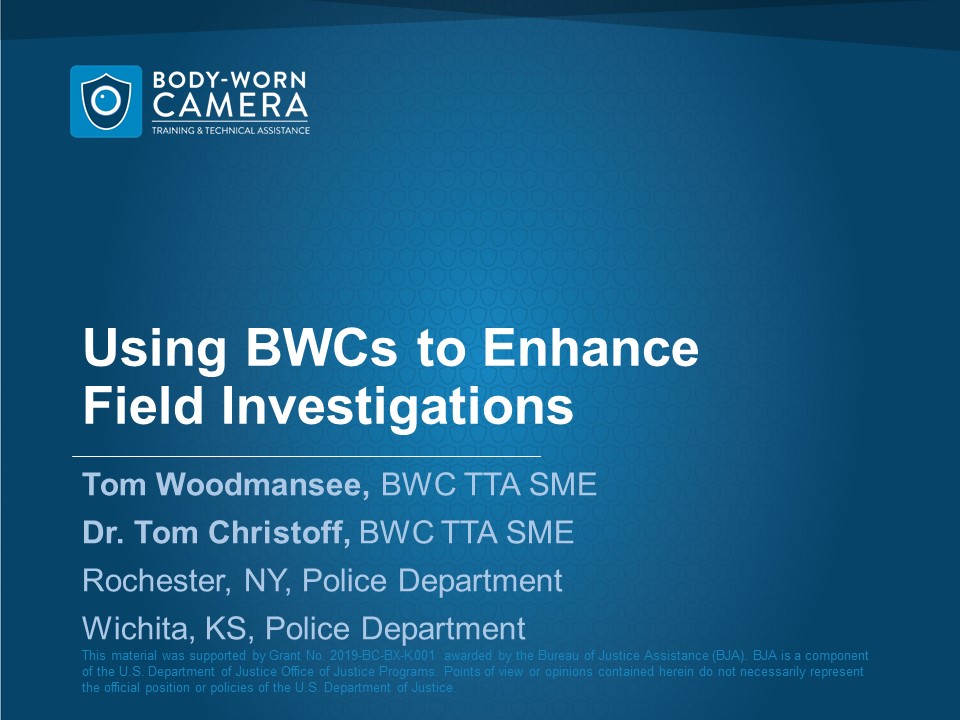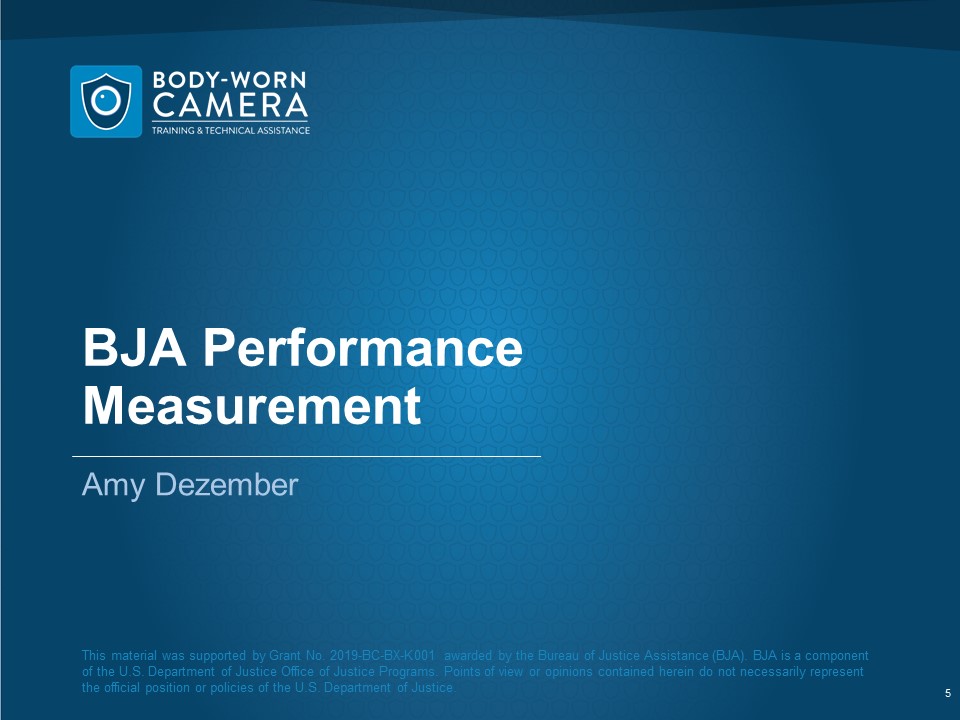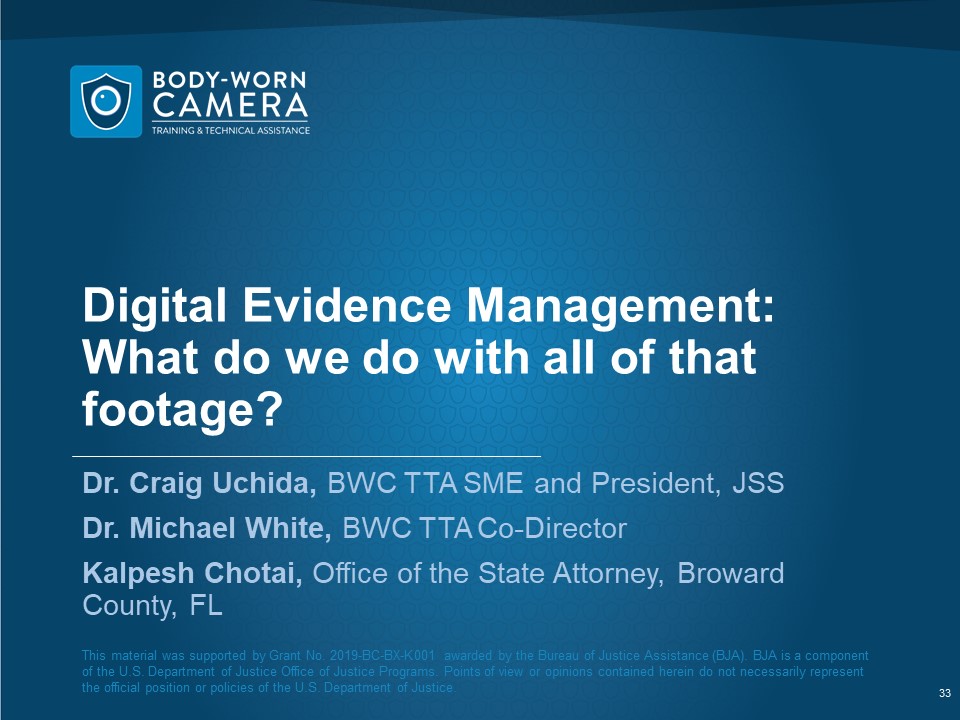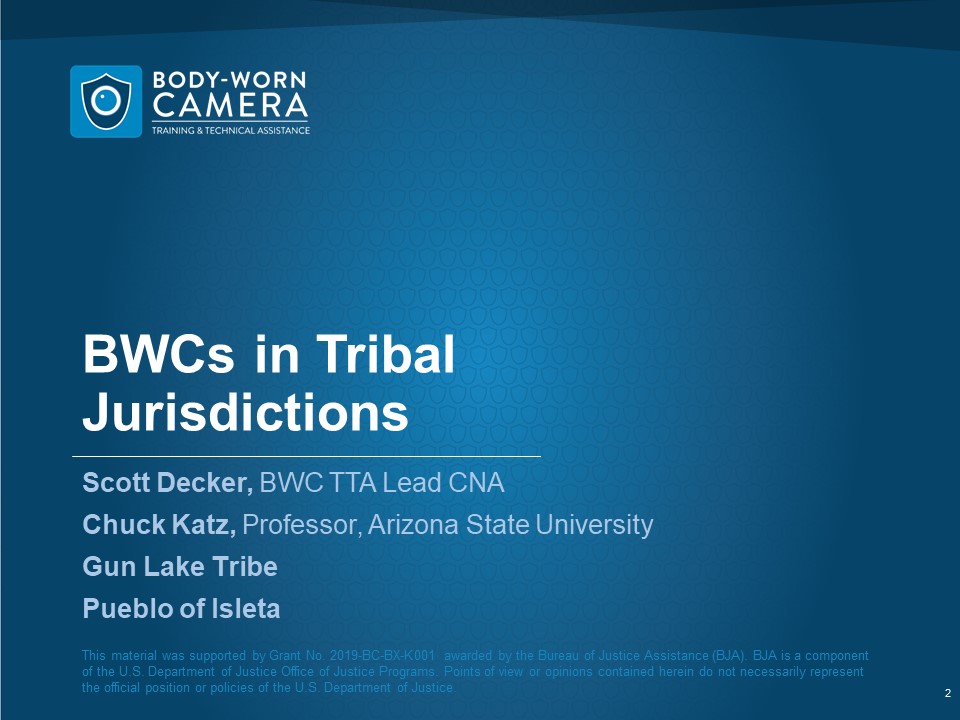On June 22-24, 2021, the Body-worn Camera (BWC) Training and Technical Assistance (TTA) team, in partnership with the Bureau of Justice Assistance (BJA), held the 2020 BWC TTA Virtual National Meeting. This meeting was primarily intended for FY 2020 BWC Policy and Implementation Program (PIP) grant agencies, but was also open to previous years' grantees. Members of the BWC TTA Team, subject matter experts (SMEs), and representatives from BJA and JSS also participated in the meeting.
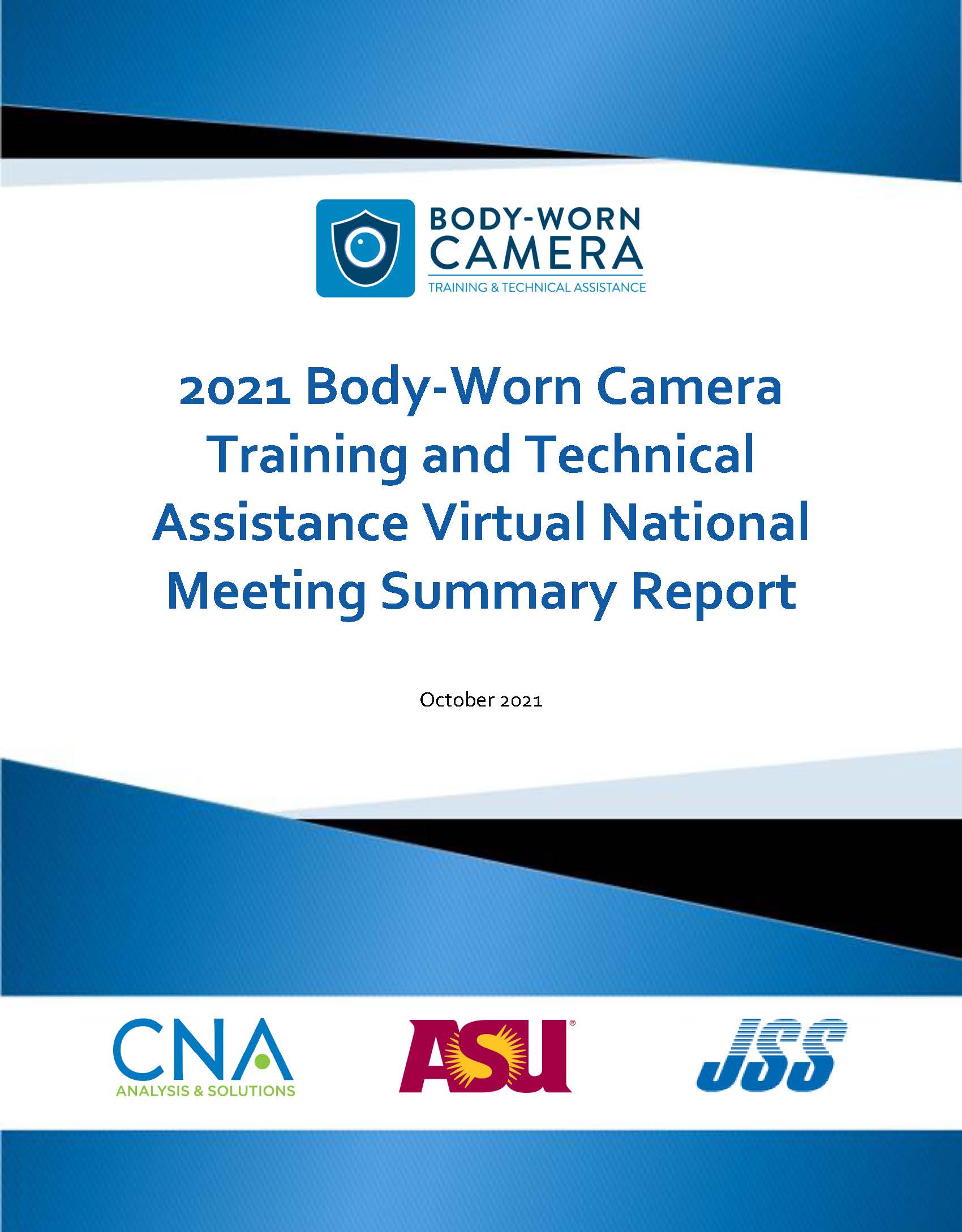
| To review participants' discussions and lessons learned from the meeting, new idea for TTA, and evaluation feedback from the attendees, access the BWC TTA National Meeting Summary Report here. |
Due to COVID-19, this meeting was held in a virtual format again. Each of the 2021 Virtual National Meeting training sessions were recorded, and you may access the session slides by clicking on the links below:
| Session Title | Session Description & Materials |
Day One - Welcome and Introductions | |
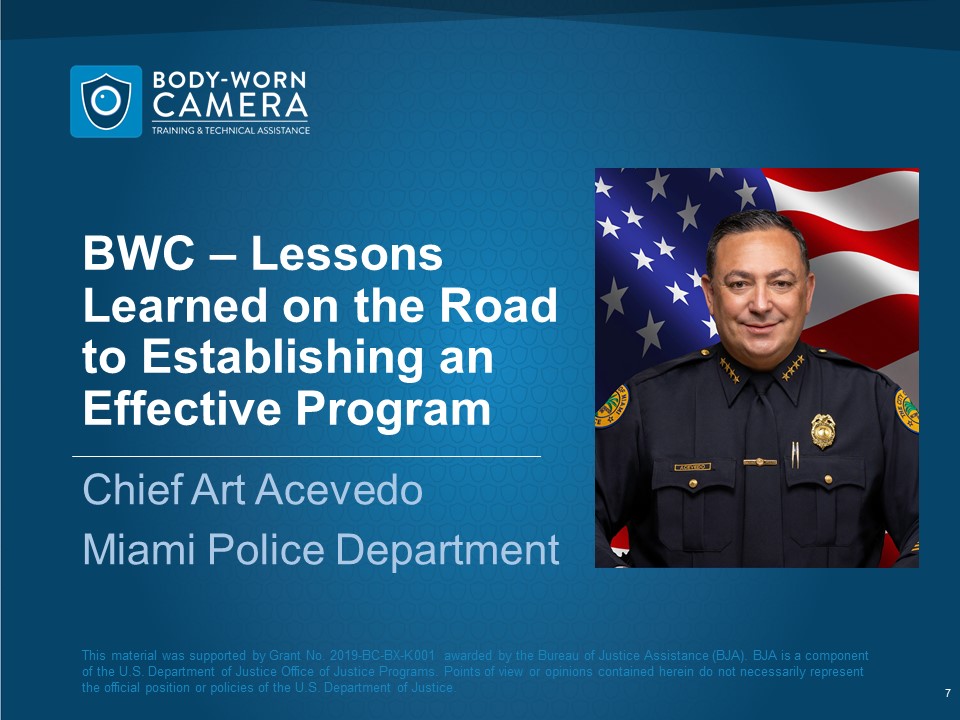 Keynote Presentation: BWC - Lessons Learned on the Road to Establishing an Effective Program | Chief Art Acevedo of the Miami Police Department discussed his experiences implementing BWCs, lessons learned, and how to establish an effective BWC program. Access the presentation here. |
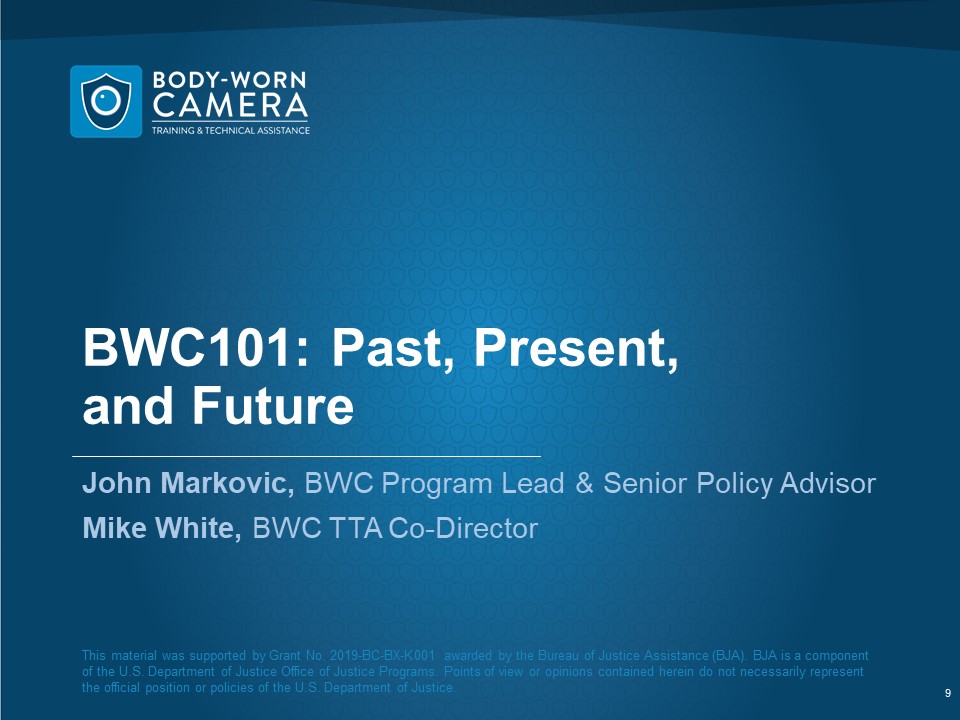 BWC 101: Past, Present, and Future | BJA's John Markovic and the BWC TTA Co-Director Dr. Michael White discussed the emergence of BWCs as critical to evidence generation, officer and public safety, and police-community relations. They also provided a brief overview of the BJA BWC PIP, BJA BWC Toolkit, and TTA resources and discussed foundational elements of the BWC TTA Program. Access the slides here. Access the presentation here. |
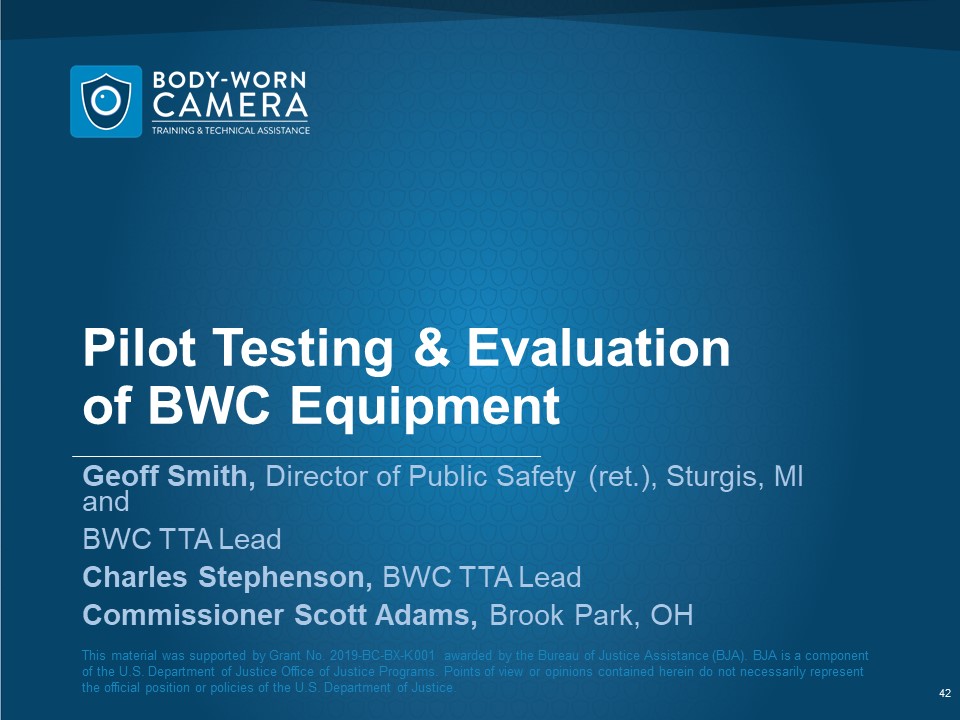 Pilot Testing & Evaluation of BWC Equipment | During this session, two BWC TTA SMEs presented on challenges and best practices associated with testing and evaluating BWC equipment, prior to procurement. Additionally, two BWC PIP agencies discussed what they did to test and evaluate equipment and how that informed their camera purchase and BWC program. Access the presentation here. |
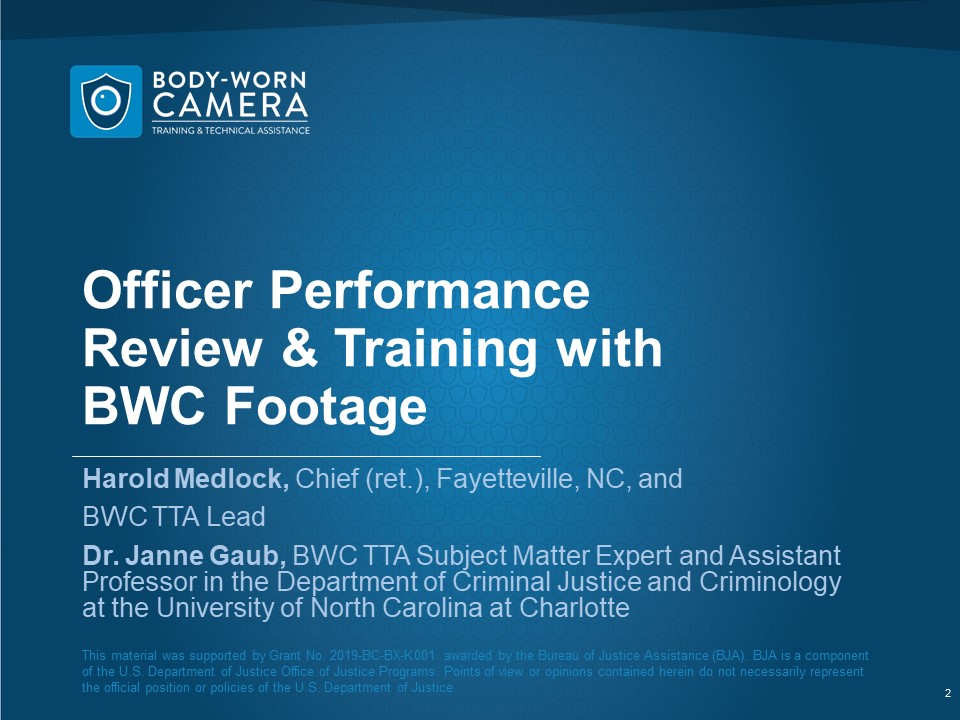 Officer Performance Review & Training with BWC Footage | This session consisted of a conversation between two BWC TTA Subject Matter Experts on topics related to reviewing BWC video footage to assess officer performance, and how BWCs can be used as a training tool. The linkage between performance reviews and using the results of those reviews to inform officer training was also discussed. The session included an opportunity for participants to ask questions of the presenters. Access the presentation here. |
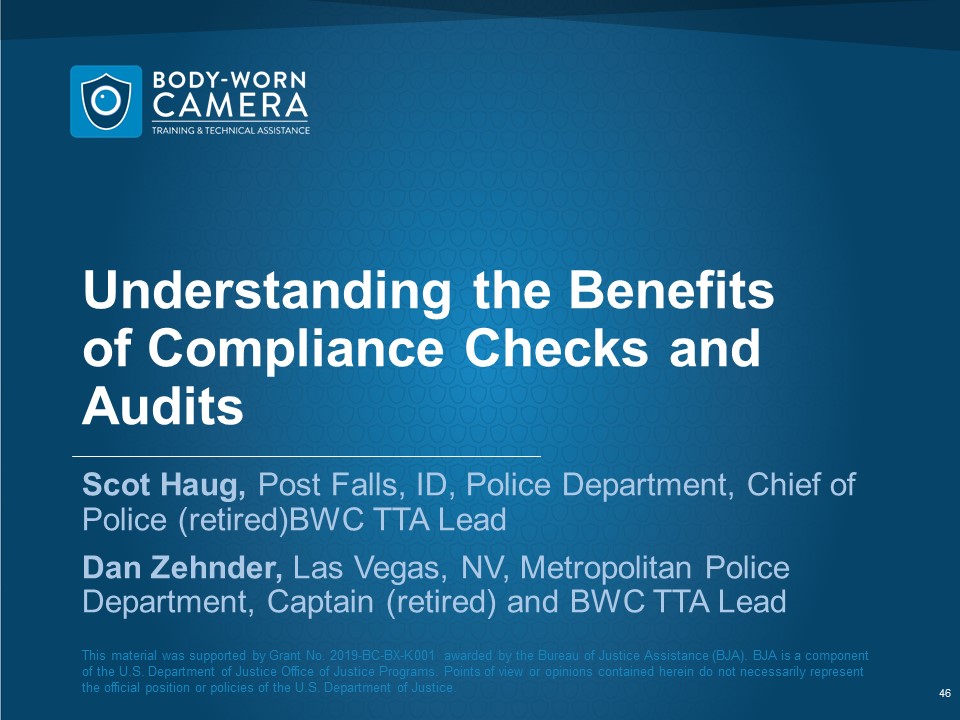 Understanding the Benefits of Compliance Checks and Audits | This session focused on issues, concepts, and approaches to reviewing BWC videos for policy compliance review and program auditing, covering topics such as the important role of compliance monitoring in BWC programs, different levels of monitoring (e.g., monitoring individual officer, program, or organizational performance), and suggested approaches for implementing compliance monitoring programs. It also included discussion on various compliance monitoring programs that agencies have implemented. Access the slides here. Access the presentation here. |
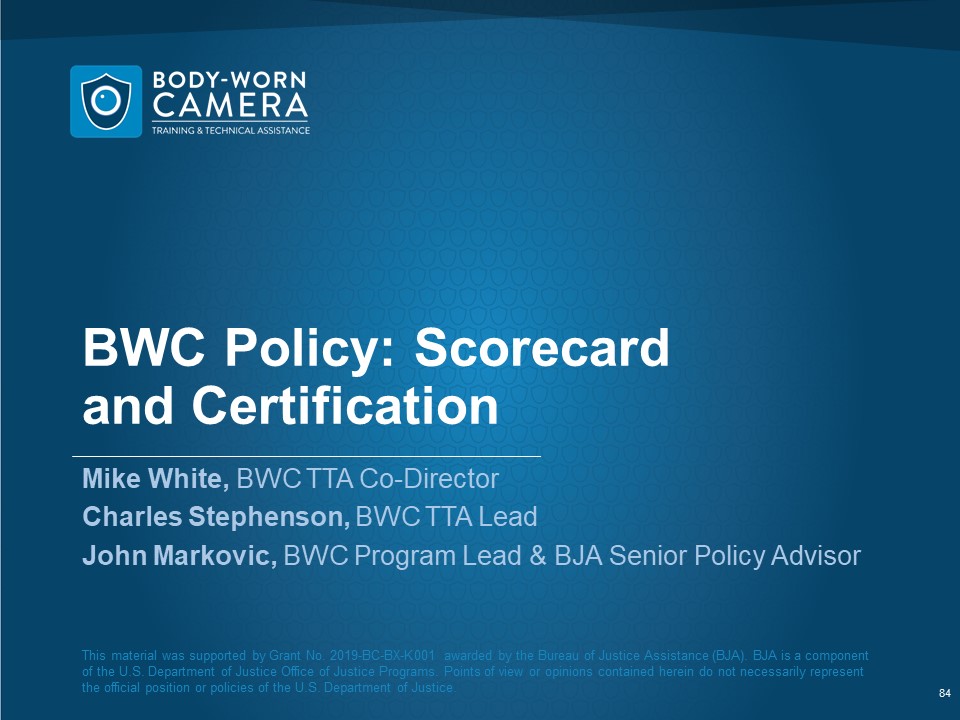 BWC Policy: Scorecard and Certification | This session focused on the importance of BWC policy and the steps BWC PIP agencies must go through to pass the policy review process. This session covered the fundamentals of the BWC policy review process and included a review of the key mandatory elements of the BWC Policy Review Scorecard and Certification. Access the slides here. Access the presentation here. |
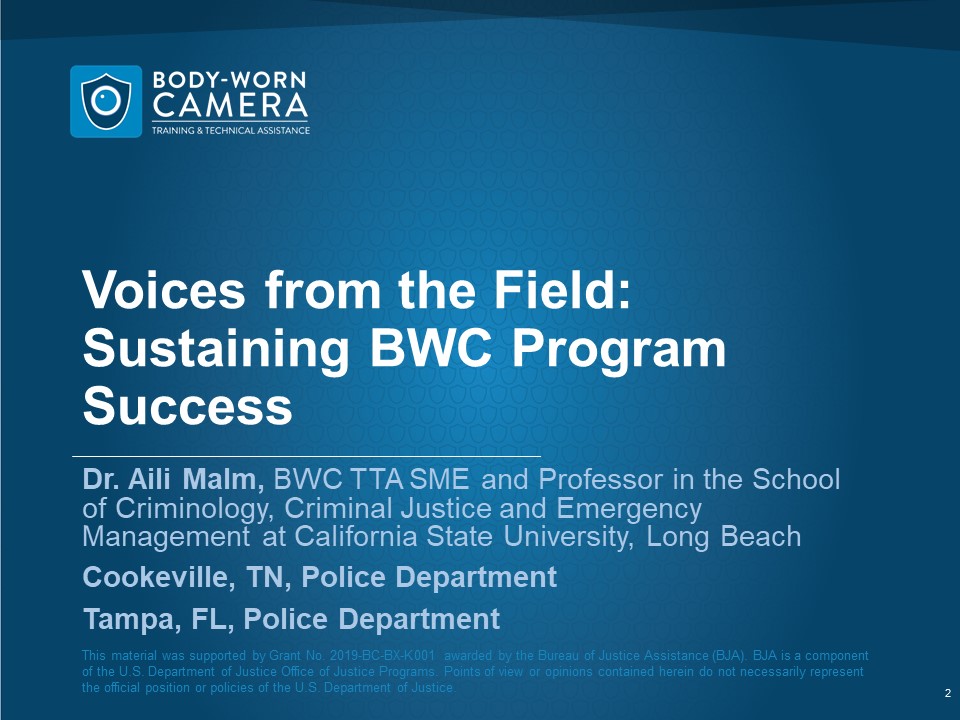 Voices from the Field: Sustaining BWC Program Success | This session discussed best practices for sustaining a successful BWC program. In this session, we heard from two sites about the implementation of their BWC programs, how they have sustained success with their program long after first implementation. Agencies discussed topics such as changing technology solutions, modifications to policy, and community outreach and engagement focusing on their lessons learned and best practices. Access the presentation here. |
Day Two | |
 Q&A/Office Hours with BJA State Policy Advisors & JustGrants | BJA State policy advisors and representatives from JustGrants were available to answer questions from BWC PIP grantees. Meeting attendees with questions related to grant management and the systems supporting it were encouraged to participate. Access the presentation here. |
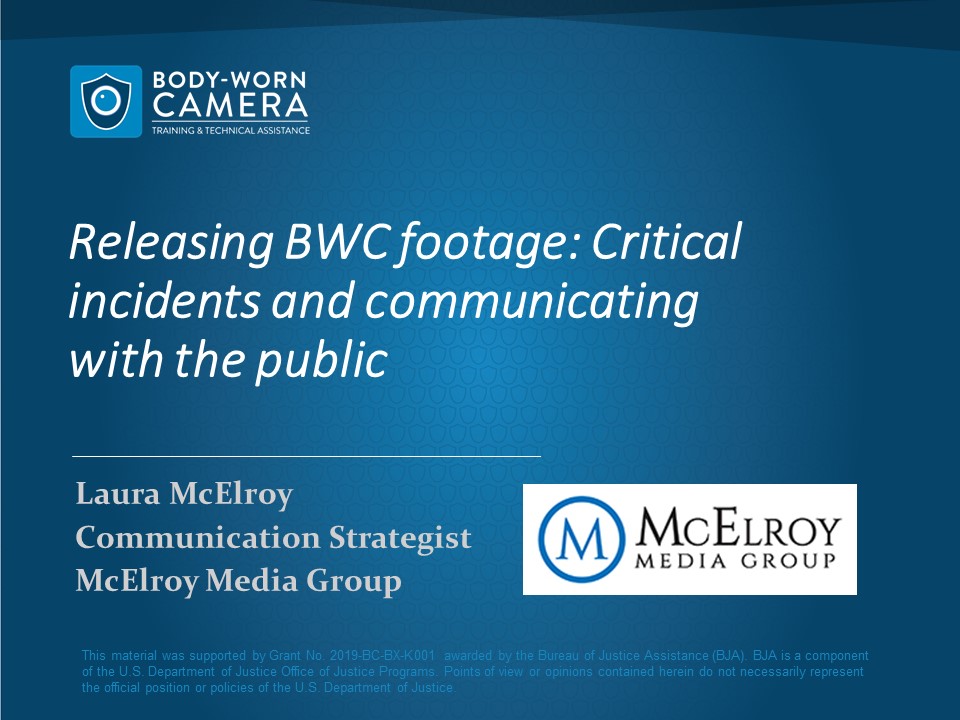 Releasing BWC footage: Critical Incidents and communicating with the public | Laura McElroy, Communications Strategist, discussed releasing BWC videos and communicating with the public following a critical incident, including the media perspective. Access the slides here. Access the presentation here. |
Improving Police Research and Training: Integrating Data from Body-Worn Camera Footage into the Workflow | In this session, Dr. David Makin and Megan Parks from Washington State University's Complex Social Interaction lab (CSI) discussed their research on body-worn camera footage and what they have learned from the analysis of over 15,000 hours of BWC footage. Topics covered included operationalizing de-escalation, the importance of context, integrating BWC video data into the workflow, and what departments need/want to know about analyzing BWC videos. Access the slides here. Access the presentation here. |
BWCs and Community Engagement | In this session, we heard from two BWC SMEs about important and innovative ways to engage community members throughout the BWC implementation process. The speakers discussed different methods of conducting outreach to the community, national trends related to critical incident reporting, barriers to meaningful community engagement, and how to sustain community engagement surrounding BWCs. Additionally, two BWC PIP agencies each described in detail a way in which they engaged their community when implementing BWCs. Access the slides here. Access the presentation here. |
Understanding the Federal Procurements Process | The BJA Office of the Chief Financial Officer (OCFO) provided a brief overview of the federal procurement requirements for BWC PIP grantees and were available for questions. This session was aimed to help grantees who have yet to procure their BWCs, do so in accordance with federal procurement guidance/rules. Access the slides here. Access the presentation here. |
Using BWCs to enhance field investigations | Police are recognizing more and more how BWC and digital evidence can assist them with their investigations in ways that were not commonly considered during their initial implementations. This session highlighted how some have taken advantage of BWC to enhance their investigations in the field that can be considered by other agencies. Access the presentation here. |
Day Three | |
Q&A/Office Hours with BJA State Policy Advisors & JustGrants | BJA State policy advisors and representatives from JustGrants were available to answer questions from BWC PIP grantees. Meeting attendees with questions related to grant management and the systems supporting it were encouraged to participate. Access the presentation here. |
BJA Performance Measurement | This presentation delved into how BJA uses performance measures to assist the grantees, improve BJA programs, make good decisions, and report to the Hill on how funds are spent. Access the slides here. Access the presentation here. |
Digital Evidence Management: What do we do with all of that footage? | This session focused on BWC footage and the way in which it is used within seven police departments and their prosecutors' offices. During the session, participants learned best practices and considerations for managing digital evidence. It covered topics such as how police use footage for measuring activation and compliance and how a prosecutor uses the footage. Access the slides here. Access the presentation here. |
BWCs in Tribal Jurisdictions | Tribal agencies, and agencies with tribal lands within or nearby their area of responsibility, face unique challenges and considerations when implementing BWC programs. During this session, two BWC TTA SMEs discussed these challenges (e.g., recording of minors, recording on tribal lands) with representatives from two tribal BWC PIP agencies. Access the presentation here. |
BWCs in Correctional Settings | This session focused on the use of BWCs in correctional settings and covered topics such as common barriers to adoption and implementation, training, limitations of the cameras, oversight, privacy, and other challenges unique to correctional settings. The session was facilitated by the BWC TTA Program Director and corrections SME, Chip Coldren. It included four panelists: two BWC TTA leads responsible for helping corrections BWC PIP agencies implement their programs and representatives from two BWC PIP corrections agencies. Access the presentation here. |
The Evolution of BWC and Other Technology: Changes and Lessons Learned | This panel focused on changes in BWC and other technology over the last six years. As with other technologies, BWCs evolve and change quickly. The panel discussed the current state of technology, the lessons learned from purchasing and using BWCs, and the realities of integrating BWCs with other systems. Access the slides here. Access the presentation here. |
Closing Thoughts Q&A | The BWC PIP program team leadership provided a brief summary of the conference and discussed key takeaways. Leadership discussed any training and technical assistance needs they heard from participating agencies and were available for questions. Access the presentation here. |




